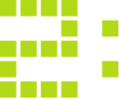RTP2
RTP2 is the second television channel of Rádio e Televisão de Portugal, the Portuguese public broadcasting corporation. Commonly referred as the "Second" (O Segundo), and for a time rebranded as "Dois" (Portuguese for two), this historically state-run television channel started its regular broadcasting on 25 December 1968. Nowadays, RTP2 is a public-service, advertising-free channel that serves as an alternative to RTP's main channel, RTP1.
| RTP2 | |
|---|---|
| Launched | 25 December 1968 |
| Owned by | Rádio e Televisão de Portugal |
| Picture format | Resolution: 576i (SDTV) 1080i (HDTV) Aspect Ratio: 16:9 |
| Audience share | 1.5% (March 2017, CAEM) |
| Slogan | "Culta e adulta" Cultured and mature |
| Country | Portugal |
| Broadcast area | Portugal |
| Headquarters | Lisbon Porto |
| Formerly called | Segundo Programa (1968 - 1978) RTP Canal 2 (1989 - 1992) RTP TV2 (1992 - 1996) 2: (2004 - 2007) |
| Sister channel(s) | RTP1 RTP3 RTP Memória RTP Açores RTP Madeira RTP África RTP Internacional |
| Website | rtp.pt/rtp2 |
Availability | |
| Terrestrial | |
| TDT | Channel 2 (SD) |
| Satellite | |
| NOS | Channel 2 (HD) |
| MEO | Channel 2 (SD) |
| Cable | |
| NOS | Channel 2 (HD) |
| Nowo | Channel 2 (SD) |
| IPTV | |
| MEO | Channel 2 (HD) Channel 302 (SD) |
| Vodafone | Channel 2 (HD) |
| Streaming media | |
| RTP Play | http://www.rtp.pt/play/direto/rtp2 |
Similar to BBC Two, RTP2 aims at less mainstream and more intellectual content. RTP2 is the only of several Portuguese and European national/international channels that has a strict cultural and educational programming (comparable to Arte). RTP2 is the only broadcaster from Portugal that broadcasts programming without interruptions, ad breaks or in line messaging. Together with sister channel RTP1, it became a 24-hour service in 2005.
RTP2's line-up is devoted to worldwide recognized quality television content, institutional EU/national programming or advertising, television series, cinematography, documentary films, theatre and classical music. As of 2007, its share of the national audience was 5%-7%.
History
RTP2 (going under the unofficial name of II Programa) began broadcasting on 25 December 1968 on the UHF band, broadcasting to large urban centres, relaying selected RTP1 shows over the course of two hours every night. Regular broadcasts started on 21 November 1970. As the 1970s progressed, the channel slowly started to add (predominantly European) shows on the schedule that RTP1 did not air.
On 16 October 1978, RTP decided to separate RTP-1 and RTP/2, giving each channel their own teams and news operations. Fernando Lopes became the controller of the newly-separate channel, being nicknamed as "Canal Lopes" (the Lopes channel).
Towards the start of the 80s, owing to cost-cutting measures, RTP 2 was now under RTP 1's control again.
In 1986, the channel was part of the Europa TV experiment, airing the channel's programming between 16:30 and 20:00. As soon as Europa TV closed, some Music Box shows were relayed on the channel. Agora Escolha premiered in the same year, a phone-in show which allowed the viewer to choose from two different TV shows. It got cancelled in the mid-90s, apart from a brief (and web-centric) revival in 2011 on RTP Memória.
On 17 September 1990, RTP 2 was renamed Canal 2, then to TV2 on 14 September 1992. As TV2, the channel's slogan was A Outra TV.
In 1994, TV2 was forced to focus entirely on minorities, causing major changes to the channel's schedule. Football and telenovelas were transferred from TV2 to the more mainstream channel, Canal 1 and the channel's ratings started to vertiginously decrease.
On 29 April 1996, the channel's name reverted to RTP2, carrying the same scheduling format as TV2. The channel started to relay Euronews in Portuguese at certain times.
Commercial advertising was now prohibited towards the new millennium.
On 5 January 2004, the channel renamed once again, becoming 2:, pronounced a dois (the two). As a result, the channel was now forced to focus on cultural interests and the civil society.
Logos and identities
1968-1978
1978-1980
RTP2 began a 12-year period of changing logos alongside its sister channel RTP1 ,and that's why these two channels were changing their logos as well as their on-air identities at overall for a lot of various times. Obviously, RTP2 were adopting a new logo as a separate entity in October 1978, and it were consisting of a stylish-lowercased rtp wordmark alongside the 2-numeral that is formed out of the letter t, because this logo is so famous for appearing on Zé Gato, that had been aired on RTP2.
1980-1981
Sometimes when RTP's two TV channels commenced a 5-year period of sharing their same logo format with some different colours, RTP2 began to use a new logo on 7 March 1980, and eventually, its new logo were the same than RTP1's new logo, but the RTP1 wordmark are instead replaced with the RTP2 wordmark, because this logo is coloured with yellow, so that's why yellow will be RTP2's favourite colour.
1981-March 1983
In February 1981, RTP2 got a new logo again and it were the same than RTP1's logo, but the 1-numeral are instead replaced with a red 2-numeral, especially that the RTP wordmark are appearing under the 2-numeral although it is also coloured with red.
March-July 1983
 RTP2's fifth logo used from 21 March to July 1983.
RTP2's fifth logo used from 21 March to July 1983.
Later, on 21 March 1983, RTP2 adopted another new logo which is same than RTP1's new logo, and by that, this new logo came up with an ident that contains some music which is a crescendoing synthesizer tune that is sounding very similar to THX's Deep Note.[1]
July-October 1983
October 1983-1984
1984-1985
In the spring of 1984, RTP2 were launching yet another new logo that is similar to RTP1's new logo, but eventually, the 1-numeral are still again replaced by the 2-numeral while it is beside to the "RTP" wordmark, although it is using the Sinaloa typeface while appearing inside a rectangle.
1985-1986
 RTP2's ninth logo used from December 1985 to 12 October 1986.
RTP2's ninth logo used from December 1985 to 12 October 1986.
From December 1985, RTP2 got a new logo that consists of a red 2-numeral that is drawn out of three lines while the RTP wordmark are coloured with royal blue although it is underneath the symbol, but the RTP wordmark were soon adopted on RTP's logo within the following year.
1986-1988
 RTP2's tenth logo used from 13 October 1986 to 1 December 1988.
RTP2's tenth logo used from 13 October 1986 to 1 December 1988.
On 13 October 1986, RTP2 were again getting another new logo that gets changed into a rounded rectangle which has the RTP wordmark appearing to the left of the side of the 2-numeral.
1988-1990
On 2 December 1988, RTP2 were yet again relaunching its on-air identity with a new logo that consists of a 2-numeral which is formed up of three lines that is coloured red, green, and purple, although they are forming a larger 2-numeral which will contain a picture that can be seen from the transitory phase which will lead into RTP2's next on-air identity.
1990-1992
 RTP2's twelfth and ancient logo used from 17 September 1990 to 13 September 1992.
RTP2's twelfth and ancient logo used from 17 September 1990 to 13 September 1992.
On 17 September 1990, RTP2 introduced a new logo which consists of a 2-numeral that is supposed to be an permanent, white and opaque DOG, although it depicts a handwritten "2"-numeral, and it were eventually coming up with some idents that consists of mainly on several fruit chopped in the middle by the logo, though it gets accompanied by synthesized pieces of music,[2] and besides, there is also a startup ident which consists of something for what it should look like a chalkboard that is drawing of a line which will enter into a TV set until it later forms the logo, but there is also a closedown ident which consist of an animation with the same style that has been used for why it is focusing on the Portuguese discoveries, and that's how it were used as RTP2's anthem film during its on-air identity.
1992-1996
Later, on 14 September 1992, RTP2 became rebranded as RTP TV2, and by that, it introduced a new logo which is based on a stylized yellow-coloured stripe that is forming a "2"-numeral, while it is beside to two pieces of quartz that is forming the word "TV", and however, this logo came up with some various idents that are featuring at that time some prominently yellow stripes, but in 1994, the graphics were slightly changing to a yellow background with some various stripes, but the logo were remaining the same.[3]
1996-2002
 RTP2's fourteenth and older logo used from 29 April 1996 to 27 January 2002.
RTP2's fourteenth and older logo used from 29 April 1996 to 27 January 2002.
On 29 April 1996, to coincide with the implementing of RTP's new corporate logo, RTP TV2 decided to revive its original name, and so, it were reverting its name back to its original brand as RTP2, thus getting a new logo which consists of a white "2"-numeral that is inside a light-orange-coloured background along with the "RTP" wordmark which is underneath in white colour, although it is overlaid in a dark blue background, as RTP2's new-looking idents are consisting of mainly on the logo that is flashed on several themes such as typewriters, stripes (a reference to the previous identity), and some dancing people, although these idents are getting accompanied by RTP2's orchestral tune with some prominent arrangements of a harp, violin and cello, but these idents along with the channel's overall imagery are continuing to be, by far, one of the most original and creative ever made on Portuguese television, so later, on 12 October 1998, RTP2 redesigned its 1996 identity with a new look that is designed by Thomas Sabel at Novocom, and it will especially give an predominance to the actual people by adding the green colour into its color scheme, and besides, from 2000, they were later changed into simply-looking graphics that are designed by BBC Broadcast, but these graphics were short-lived because they are lasting a short use until 2002 when RTP2 updates a new logo.
 First phase of RTP2's fourteenth and older logo used until 11 October 1998.
First phase of RTP2's fourteenth and older logo used until 11 October 1998.
2002-2004
 RTP2's fifteenth and old logo used from 28 January 2002 to 4 January 2004.
RTP2's fifteenth and old logo used from 28 January 2002 to 4 January 2004.
On 28 January 2002, RTP2 were again upgrading a new logo alongside its sister channel RTP1, but this identity are only using one single ident that is used during the lifetime of this logo, and it consists of a representation of RTP2's logo in a white flash, with a dark orange background.
2004-2007
 RTP2's sixteenth and former logo used from 5 January 2004 to 18 March 2007.
RTP2's sixteenth and former logo used from 5 January 2004 to 18 March 2007.
On 5 January 2004 at 21:00, RTP2 dropped its RTP2 brand and were instead changing its name to "2:", so thus, at the same time, its identity and concept becomes replaced by a digital green-coloured 2-numeral that is beside to the ":", although this logo will be the new name for the channel, especially that the "2:" idents are becoming computer-generated with CGI, while being accompanied by the new 2:-tune that contains some electronic and classical music, with some prominent piano arrangements.
2007-2016
 RTP2's seventeenth and previous logo used from 19 March 2007 to 9 May 2016.
RTP2's seventeenth and previous logo used from 19 March 2007 to 9 May 2016.
On 19 March 2007, 2: retired its "2:" brand, and by that, it were reverting its channel name back to the original name as RTP2, thus reviving the "RTP2" brand, but at the same time for resurrecting the RTP2's original name, it implemented a new logo by adopting some new idents that continues to become computer-generated CGIs with a lot of vertical stripes in their various forms as the main theme.
 RTP2's seventeenth and previous logo with the slogan "Quem vê, quer ver".
RTP2's seventeenth and previous logo with the slogan "Quem vê, quer ver". Network ident used from 2007 to 2014.
Network ident used from 2007 to 2014.
2016-present
 RTP2's eighteenth and current logo since 10 May 2016.
RTP2's eighteenth and current logo since 10 May 2016.
On 10 May 2016 at 21:00, RTP2 launched its current logo along with a new on-screen look, as well as some new idents that continues to use RTP2's favourite color of yellow.
Current programmes
News
- Jornal 2
Talk shows
- 70x7 (religious talk-show)
- A Fé dos Homens (religious talk-show)
- Bairro Alto (arts talk-show)
- Sociedade Civil (different areas debate talk-show)
Magazines
- Arquitectarte (architecture magazine)
- Artes de Rua (street arts, magazine)
- Bastidores (cinema magazine)
- Biosfera (environment and ecology magazine)
- Câmara Clara (arts magazine)
- Agora (arts magazine)
- Couto & Coutadas (hunt magazine)
- Da Terra ao Mar (agriculture magazine)
- Iniciativa (business development magazine)
- Universidades (universities magazine)
- Vida por Vida (fire fighters magazine)
Debate
- Clube de Jornalistas (journalism debate)
- Diga lá Excelência (debate)
- Eurodeputados (eurodeputy's debate)
- Olhar o Mundo (international news debate)
- Parlamento (deputy's debate)
Others
- Consigo (program)
- Nós (immigration program)
- Café Central
- A Noite do Óscar
Sports
Blocks
- Zig Zag (children, teens' and young people's block broadcast on weekdays from 07:00 to 10:47 and 17:00 to 20:49 and weekends from 08:00 to 13:30 (Saturday)/13:00 (Sunday).
Imported shows
Animated shows
Children's Programmes
- Chicken Minute
- Johnson and Friends
- Lift Off
References
- RTP2 ident from 1983, YouTube
- Canal 2 idents from 1990, YouTube
- TV2 ident from 1994, YouTube
External links
- Official Site (in Portuguese)
- RTP2 Live Stream on RTP Play